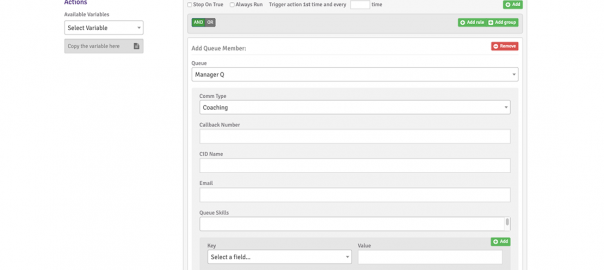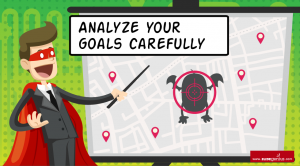Have you ever heard of Flashbulb memory?
Flashbulb memory is our tendency, as humans, to only remember experiences where our emotions run high. The thrilling time we went skydiving. The upset we felt when we didn’t get that promotion. Or, the infuriating call we had with a red-hot customer last week.
When it comes to our daily – sometimes monotonous – routines though, most of our memories vanish. We don’t remember what we ate for dinner last night or how many customer interactions we cycled through during the day.
This fleeting access to memory is why in-the-moment coaching is so impactful.
A typical call center coaches and trains agents in a few different ways. Leaders rate agent interactions when they get around to it. They hand-pick a few conversations at random to review. And, they cram months (and months) of feedback into a single coaching session.
But given how our memories work, coaching in spurts and keeping feedback in your back pocket won’t lead to better performance. In fact, with this approach, your agents likely won’t remember the interactions you coach them on at all.
To build call center improvement strategies for a better CX, put coaching and quality management into your daily routine.
According to Gallup, the best coaches set clear expectations and performance goals. And, they give feedback that optimizes agent strengths and improves team effectiveness.
So, start giving your agents meaningful feedback at the moment they need it to improve your customer’s experience. Before a bad behavior becomes a bad habit.
Daily quality management drives better performance and experiences for agents (and customers).
As a manager, you need to keep watch on how your agents track toward KPIs, how customers feel about their conversations, and how you’re delivering ROI on your contact center.
To help, some call center platforms (like ours) have built-in functionality, so you can monitor agent performance and offer developmental feedback, too.
There are four elements of a quality management program that drive positive performance:
- Agent scorecards
- In-line feedback on recordings and transcriptions
- Threshold and trigger-based coaching to help you ID interactions that need attention
- Microlearning lessons
Now, let’s walk through each element so you can learn effective call center improvement strategies to boost agent performance and customer happiness.
Score agent interactions for a quick performance overview.
With agent scorecards, you can create a template to grade agent-customer interactions based on the criteria that matters most to your customer experience. Think of a scorecard as the grading rubric you used to build your solar system diorama in science class. It calls out what’s important to address in customer interactions, and leaves out the smaller details (sorry, Pluto).
To build an agent scorecard in your contact center platform, create a template with the questions that matter most to your customer outcomes. Do you want agents to make the conversation personable and introduce themselves? Create a scorecard element for introductions. Do you want to rate the tone of your agent’s interaction? Were they a little abrasive, or maybe just a touch too casual? Create a scorecard element to match.
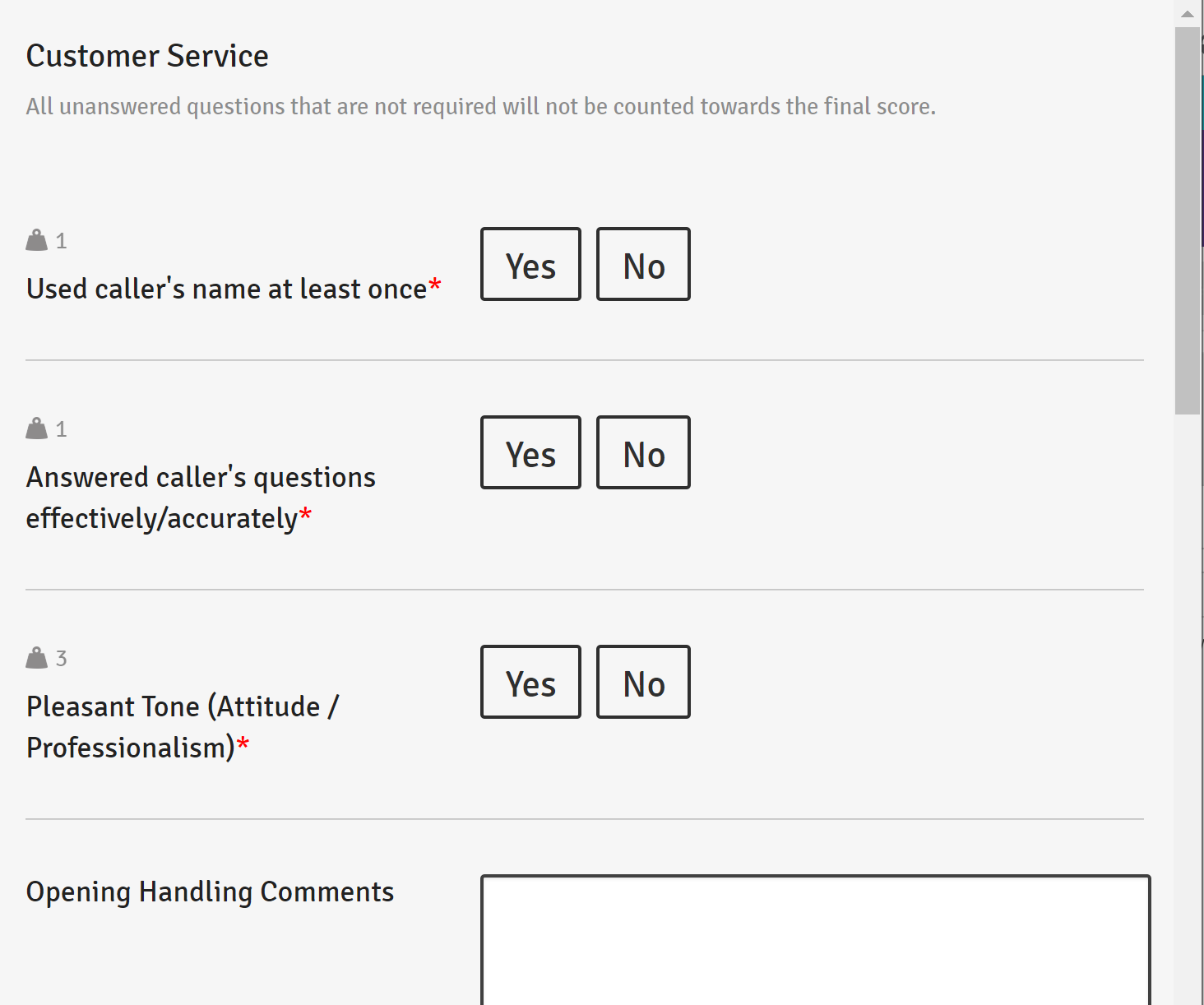
Lead with what’s most important to your customer experience. And, weigh it accordingly. If an agent breezes past their introduction but still helps the customer and leaves them happy, their scorecard should mimic that sentiment.
Use data and reports from past interactions to help you predict what matters most to your customers. If you spot a trend where customers leave low CSAT ratings after they waited on hold too long, you’ll likely want to keep watch on these metrics in your scorecard.
Give in-line feedback to add relevant context to coaching and training interactions.
Dig beyond the 30-foot overview of an agent scorecard, too. Comment and provide feedback on interaction recordings and transcriptions, adding relevant context to your coaching conversations.
With contextual coaching and training, you can focus your agents’ attention on the areas they need to correct, or the standout moments they need to repeat.
Let’s say your agent Jessie changes her tone at the 33-second mark during a customer call. She answered the phone with a helpful and positive attitude, but soon into the convo, her frustration started to show. Often times, this outpouring of frustration is involuntary. We don’t know our tone shifted and we became brusque – in-line feedback solves for this. It lets you call out moments, down to the specific second, where your agent can review their interactions and learn from it.
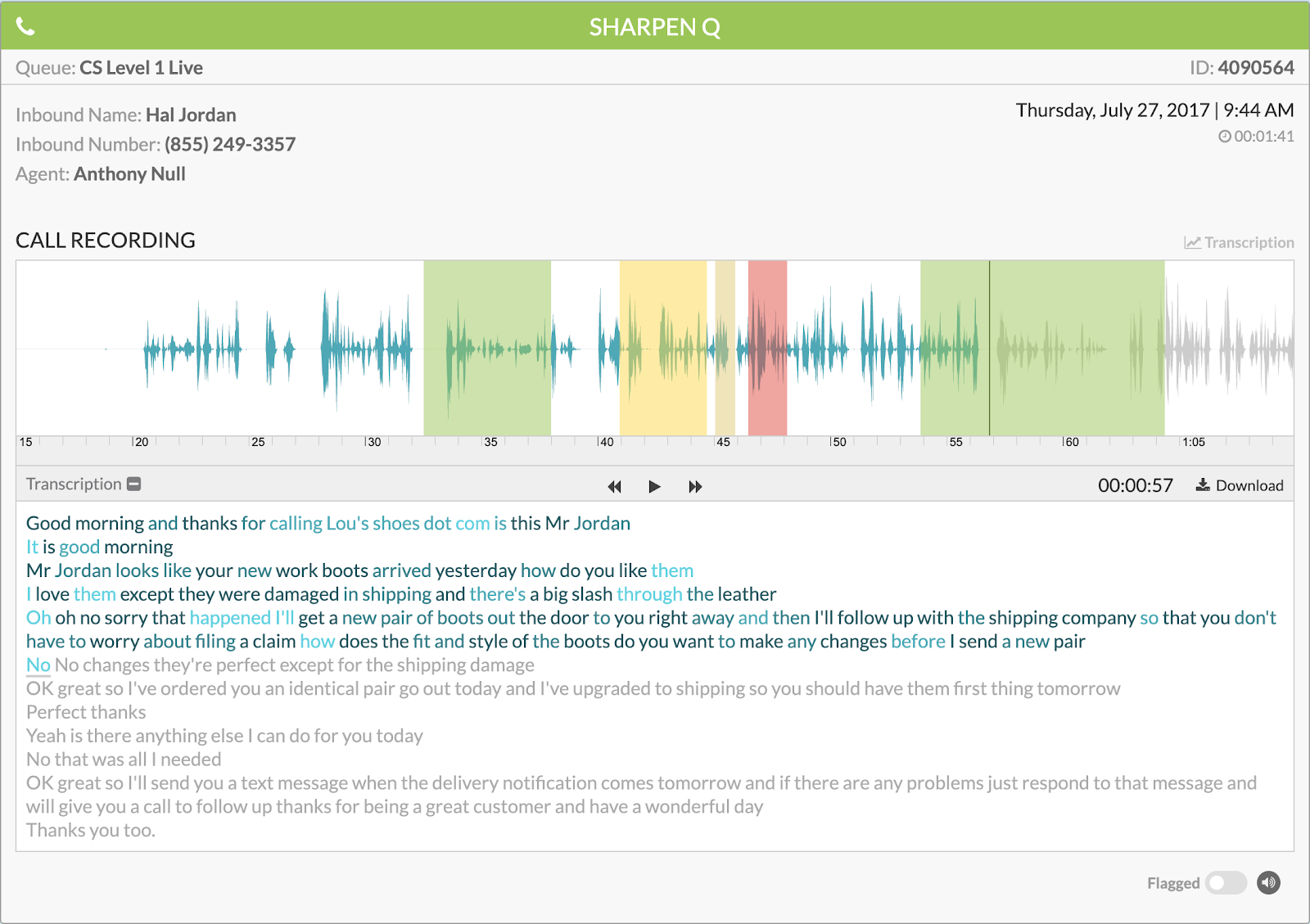
Highlight pieces of call recordings and transcriptions and tag them with color-coded feedback to help your agents see, at a glance, where they have positive and corrective feedback.
If you flag a section of the call recording with a red comment, your agents see they have a piece of feedback to go back and review before moving to the next interaction. And, if you highlight areas of the interaction in green, they’ll know you’ve IDed positive moments to put on repeat.
Set thresholds to alert you to coaching opportunities.
I know, I know. I’m giving all this advice and shelling out call center improvement strategies, meanwhile you can barely find time to scarf down a bagel for breakfast each day.
How can you move toward improvement when you barely have time to maintain the status quo?
Make automation a piece of your quality management strategy.
When you run a contact center with thousands of interactions per day, selecting a handful of interactions for review at random isn’t an effective way to improve team performance. Instead, use your contact center platform’s routing engine to help you ID interactions ripe for coaching.
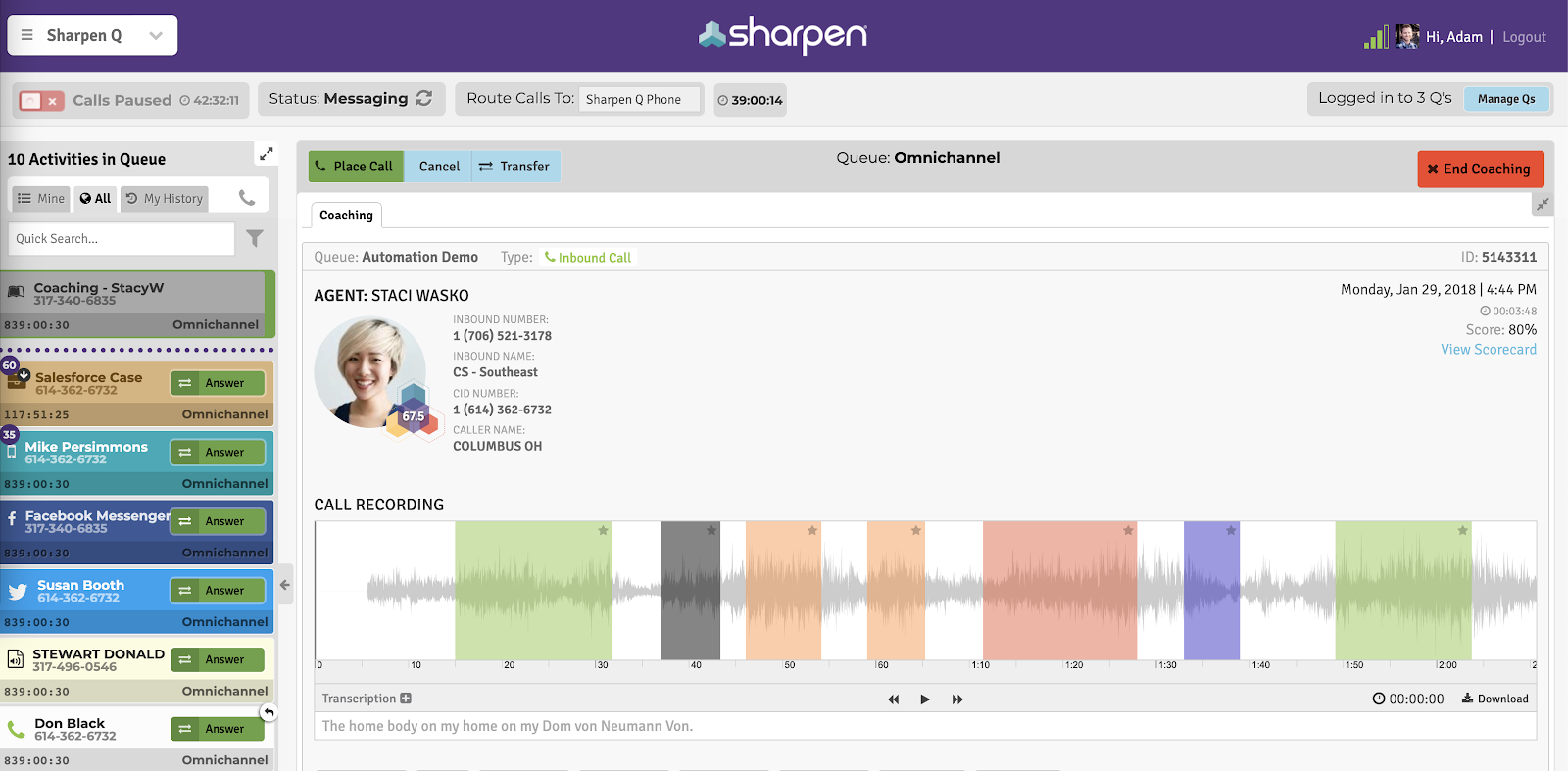
Set thresholds on certain metrics, like Average Handle Time, Hold Time, and CSAT. When the metrics start trending down or see a sudden dip (below the threshold you set), you’ll get an alert to review the corresponding interactions. Then, you can jump in and give feedback on the interactions that need it. (Before flashbulb memory vanishes memories of seemingly inconsequential interactions.)
The benefits are threefold: You don’t spend time reviewing interactions that don’t need intervention, your agents are empowered with fast, in-the-moment feedback to improve their next interaction, and your customers get better resolutions because of it.
Deliver microlearning lessons to your agents’ queues.
Once you’ve scored interactions and left comments backed by context on call recordings, push your coaching even further.
Send quick microlearning lessons and training to your agents’ queues to help them improve skills further. Based on the thresholds you set, you can automate coaching and training lessons for delivery to your agents’ queues. Let’s say your agent’s average handle time is high, your system will recognize the threshold and send a microlearning lesson over to the agent with tips to reduce AHT.
You can get hyper-specific with these microlearning lessons. Tools with text and sentiment analysis can help you watch for specific words and key phrases that pop up during customer interactions. Like if a customer says the word “cancel.” Your agents likely have a protocol to follow if a customer tries to jump ship. But if the conversation reaches this point, it’s a good idea to offer up some more resources for your agent to lean on.
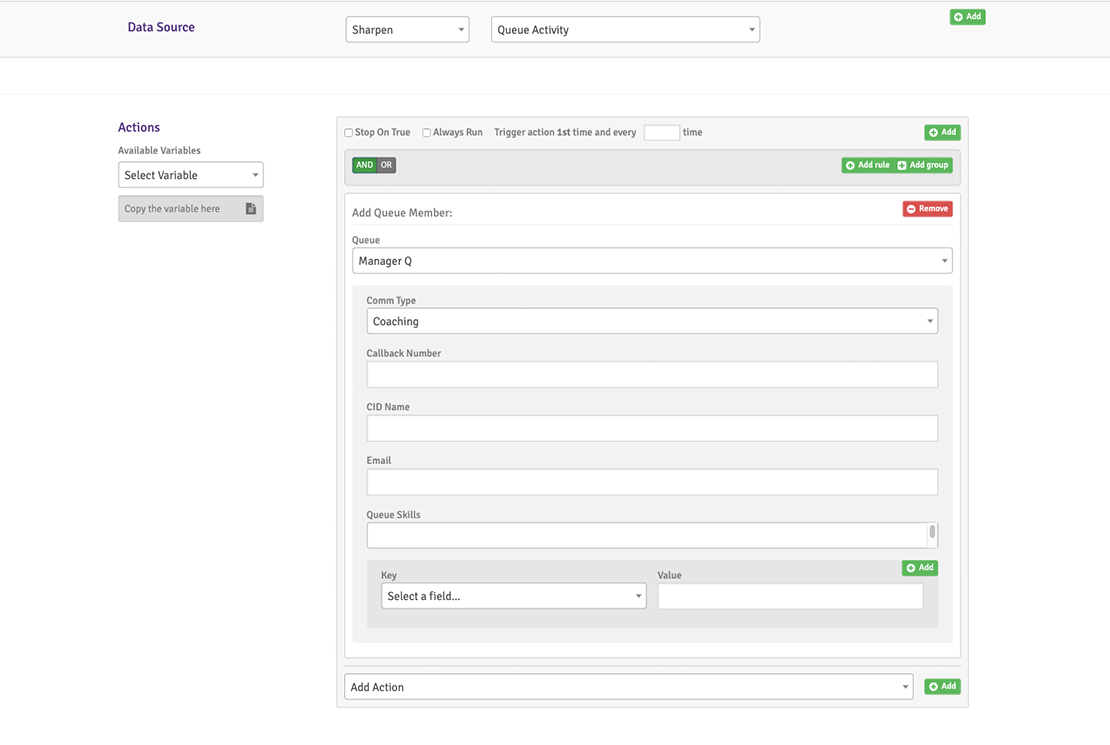
With thresholds and triggers set to watch for the word “cancel”, automate your system to send an agent a relevant microlearning exercise on “how to handle possible cancellations.” Then, they get context and training to their queue to inform relevant conversations. Say hello to a more empowered, better-equipped workforce. (And, to happier, more loyal customers).
Coaching your team and building call center improvement strategies doesn’t have to be hard when you have the right tools and tactics to help. Learn 7 ways to get real about coaching your team, so you can improve customer satisfaction. Get the ebook.
Business & Finance Articles on Business 2 Community
(16)
